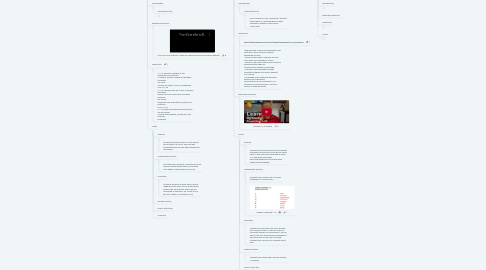
1. Videocast
1.1. Prerequisites
1.1.1. Introduction/Set
1.1.1.1. Students should have a good understanding of the following: 2-1-02 Identify and describe constant and changing characteristics of humans as they grow and develop. Examples: eye colour remains constant, height changes... GLO: D1, E3 2-1-03 Recognize that all humans do not grow and develop at the same rate. GLO: B3, D1, E1, E3 2-1-04 Recognize that food is a form of energy and that healthy eating is essential for growth and development. GLO: B3, D1, D4, E4
1.2. Required Resources
1.2.1. Life Cycle of a Butterfly | #aumsum #kids #science #education #whatif
1.3. Objectives
1.3.1. 2-1-14 Describe changes in the appearance and activity of various animals as they go through a complete life cycle. Include: an insect, a bird, an amphibian. GLO: D1, E3 2-1-15 Compare the life cycles of animals that have similar life cycles and those that have different life cycles. Examples: bee and butterfly, gerbil and butterfly... GLO: E1, E3 2-1-16 Observe and describe an animal’s life processes. Include: eating habits, movement, rest patterns, breathing
1.4. Notes
1.4.1. Analysis
1.4.1.1. Students will watch video on YouTube of the butterfly life cycle. They will gain knowledge that will help them answer the worksheet.
1.4.2. Independent Practice
1.4.2.1. With the help of parents, students will print handout that prompts them to write the four stages of the butterfly life cycle.
1.4.3. Evaluation
1.4.3.1. Students will hand in work sheet. Before logging off the class online, students will answer exit slip question which will be pertaining to the topic. Ex. Name one of the four stages of a butterfly's life.
1.4.4. Guided Practice
1.4.5. Direct Instruction
1.4.6. Summary
2. Podcast
2.1. Prerequisites
2.1.1. Introduction/Set
2.1.1.1. From teaching in one community, students should have an understanding of what language is spoken in their home community.
2.2. Objectives
2.2.1. https://www.edu.gov.mb.ca/k12/abedu/framework/k-12_ab_lang.pdf
2.2.2. Language and culture are inseparable, and effective communication requires knowledge of both. Young children have a capacity to learn more than one language at a time. The Early Years are a particularly effective developmental stage for introducing an additional language. Learning a new language provides important insights into various aspects of a culture. Knowledge of an additional language enhances an individual’s opportunities for self-expression, for intercultural communication, and for a variety of other purposes
2.3. Required Resources
2.3.1. Ojibway TV Counting
2.4. Notes
2.4.1. Analysis
2.4.1.1. Students will be introduced to the Ojibway language and they will be prompt by being asked if they speak the language at home or if they have heard with parents/grandparents/uncles/aunties speaking the language.
2.4.2. Independent Practice
2.4.2.1. Students will be given link to access worksheet on Google Docs.
2.4.2.2. Ojibway Language 1-10
2.4.3. Evaluation
2.4.3.1. Students will have the chance to go back and carefully listen to YouTube video to complete Google Docs worksheet. I will be able to tell from marking their worksheet if they were able to learn the counting. Students will also have to complete short quiz.
2.4.4. Guided Practice
2.4.4.1. Students will repeat after me the numbers in Ojibway.
2.4.5. Direct Instruction
2.4.5.1. I will explain that students must listen to YouTube video then complete worksheet.
2.4.6. Summary
2.4.6.1. By the end of this lesson, students should be able to recognize the numbers in order in the Ojibway language.
3. Map
3.1. Prerequisites
3.1.1. Introduction/Set
3.2. Required Resources
3.3. Objectives
3.3.1. Grade 5 Science 5-2-01
3.3.2. Required Resources
3.4. Notes
3.4.1. Analysis
3.4.2. Independent Practice
3.4.3. Evaluation
3.4.4. Guided Practice
3.4.5. Direct Instruction
3.4.6. Summary

